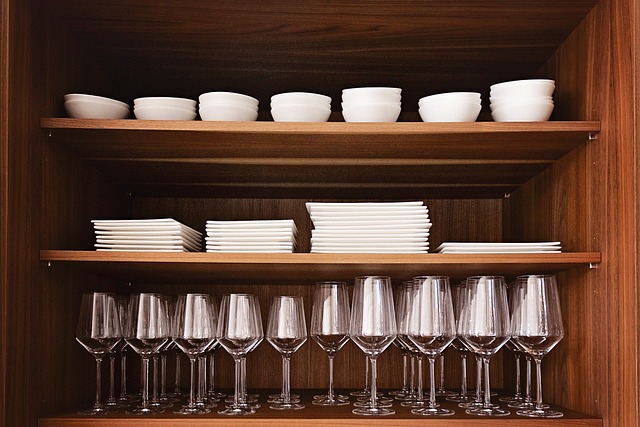Care and Maintenance Routines to Extend Tableware Lifespan
Simple, consistent care routines can significantly extend the life of your cutlery, cookware, porcelain, ceramic, and serveware. This article outlines practical cleaning, storage, and handling habits that preserve function, improve ergonomics, and support sustainability in everyday kitchen use.

Proper care and routine maintenance help your tableware remain safe, functional, and visually pleasing for years. Small habits—appropriate cleaning methods, correct drying, and mindful storage—reduce corrosion, chipping, and stress on joints and handles. This article describes step-by-step care for common materials and item types, explains storage and handling best practices, and highlights how maintenance contributes to sustainability and ergonomic safety.
How to care for cutlery and stainless items
Cutlery, especially stainless steel pieces, resists corrosion but still needs attention. After use, rinse food residues promptly to avoid acids or salts etching the finish. Wash stainless cutlery in warm, soapy water using a soft sponge; avoid abrasive pads that can scratch and expose metal to rust. Dry items immediately with a soft cloth to prevent water spots and surface corrosion. For knives, hand washing is usually recommended because dishwasher heat and detergents can dull blades and loosen handles. Periodically check rivets and joints, and hone blades with a sharpening steel to maintain cutting performance.
What cleaning practices suit cookware and utensils
Cookware and utensils vary by material—nonstick, stainless, cast iron, aluminum—so tailor cleaning to the surface. Use non-abrasive cleaners for nonstick coatings and stainless interiors; abrasive scouring can remove protective layers. For cast iron, dry thoroughly and apply a light oil layer to preserve seasoning and prevent rust. Wooden utensils should be washed gently, not soaked, and dried upright to avoid warping. Remove burnt-on food with soaking and gentle scraping rather than high-scrub chemicals. Regular maintenance, such as re-seasoning cast iron or replacing warped utensils, preserves performance and extends lifespan.
How to clean porcelain and ceramic tableware
Porcelain and ceramic tableware are durable but prone to chipping and crazing if handled roughly. Use a soft cloth or sponge and mild detergent; avoid rapid temperature changes that can cause cracking. Stubborn stains can often be addressed with a paste of baking soda and water applied gently, or a short soak in warm, soapy water. When stacking plates, place soft liners or paper between pieces to prevent abrasion. For hand-painted or gilded porcelain, follow any maker instructions and prefer hand washing to protect decoration. Inspect regularly for hairline cracks that could harbor bacteria and consider retiring damaged pieces from food service.
Best storage approaches for tableware and serveware
Thoughtful storage reduces breakage and wear. Store heavy cookware like pots and pans by stacking with protective pads, or use hanging racks for accessibility and to protect surfaces. Serveware and fragile plates benefit from vertical storage dividers or padded shelves. Keep cutlery separated in drawers with organizers to prevent scratching and blunt edges; magnetic strips can store knives securely while avoiding contact. For long-term storage, use breathable containers to avoid moisture buildup and label boxes so items are not repeatedly shifted. Good storage also helps maintain ergonomic access, reducing awkward reaches that might cause drops.
How ergonomics and handling reduce wear
Ergonomic handling practices protect both users and items. Choose utensils and cookware with comfortable, balanced grips to reduce strain and accidental slips. Lift pans with two hands when heavy, and avoid putting stress on handles by overfilling. When washing, support items—don’t rely on a single hand to hold large platters—so the risk of dropping and chipping is minimized. Proper lifting and placement techniques lengthen the practical life of handles, welds, and joins on serveware and cookware. Training household members in basic handling reduces accidental damage over time.
How maintenance supports sustainability goals
Extending the life of tableware reduces waste and the need for frequent replacements, supporting resource efficiency. Regular maintenance—repairing small chips, re-seasoning cast iron, tightening loose handles—instead of discarding items decreases environmental impact. Selecting durable materials like well-made stainless steel, vitrified porcelain, or properly maintained cast iron can be more sustainable than repeatedly replacing cheaper alternatives. Consider repairing rather than replacing when feasible, and recycle or repurpose items at end of life. Thoughtful maintenance aligns everyday kitchen care with broader sustainability objectives.
Routine attention to cleaning methods, appropriate storage, ergonomic handling, and small repairs adds up to significant lifespan gains for cutlery, cookware, tableware, and serveware. By matching care to material—stainless, porcelain, ceramic, wood, or cast iron—and by adopting consistent habits, you preserve function, safety, and appearance while supporting sustainability and ergonomic comfort.





